Tesla made the first modern electric cars, beginning about 15 years ago. It also made the first electric cars that weren’t focused on being economical or practical cars – as the first electric cars (like the Baker electrics) were designed to be, some 120 years ago.
Tesla’s concept was to make electric performance cars – so as to make them exciting cars. But this also made them expensive cars.
There’s a new electric performance car on the market – Ford’s Mustang Mach e – that could steal away some Tesla buyers – because it’s a less expensive electric performance car. 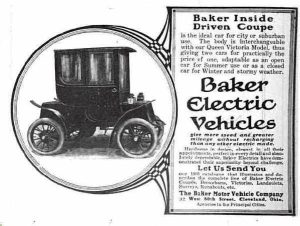
It also has some practical attributes – because it’s more a crossover than a car.
The bad news is it’s still pretty expensive – and just became a lot more so.
What It Is
The Mach e is a compact-sized, five passenger electric performance crossover designed to evoke Mustang-ish associations.
It does not have a V8 engine – and it has five rather than two doors – but it does have rear-wheel-drive, just like a Mustang (AWD is available optionally) as well as Mustang-ish sounds, if you turn them on. It also has Mustang tail-lights and a front end that emulates the look of a Mustang.
And it has four times the cargo-carrying space – because it’s not a Mustang. 
It is also a less pricey alternative to a Tesla Model Y – which stickers for $65,290 to start.
You can buy a new Mach e for $48,195 to start. This one comes with a 266 horsepower electric motor, a 70kWh battery pack and 247 miles of advertised range on a full charge. If you opt for AWD, the advertised range dips to 224 miles but you get an increase in torque output to 428 ft.-lbs. from the rear-drive model’s 317 ft.-lbs. because you get another motor.
The next-up Premium trim ($56,275 to start) can be ordered with a more powerful (91 kWh) battery that increases the range to 306 miles (290 miles with AWD).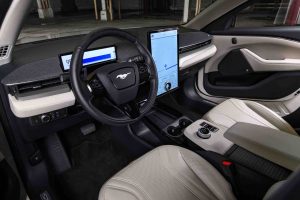
California Route 1 trims ($64,875 to start) come standard with the stronger/longer-range battery and AWD.
The top-of-the-line GT trim )$71,195) comes standard with the strongest battery – 480 horsepower – and AWD, too. Range dips to 270 miles – the price you pay for the additional horsepower. It dips to 260 if you opt for the Performance Edition, which is the price you pay to get (once again) more torque: 634 ft.-lbs vs. 600.
That latter – either figure – is more than almost any V8 ever made produces.
What’s New for 2023
The distance you can potentially go in a Mach e with the extended range battery has been increased by 13 miles vs. last year and all trims now come standard with Ford Co-Pilot 360 suite of driver assistance tech, which includes BlueCruise self-driving.
There is also a new Nite Pony Package for the Premium and GT trims. It includes 19 or 20-inch gloss black wheels and unique-to-this trim black-themed exterior and interior styling treatment to match.
What’s Good
A performance electric car that’s more useful than the typical electric performance car.
Electric GT is quicker to 60 (3.5 seconds) than a V8 Mustang GT (4.2 seconds).
“Level 2” (240V) home charge equipment included.
What’s Not So Good
Extended range battery is expensive ($8,600).
Use of this car’s performance quickly saps the range.
You will probably have to pay an electrician at least a few hundred bucks to wire up a dedicated 240V outlet in your garage to be able to “Level 2” charge at home.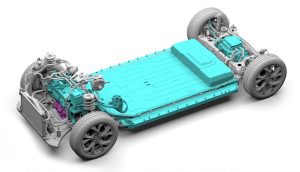
Under The Hood
It’s more like under the seats.
This is where most electric cars have their battery packs, spread out as much as possible to take up as little room as possible. So when you pop the hood, there’s not much to see.
The motor – or motors – are generally positioned close to the wheels and drive them directly. Rear-drive models have the motor in the rear, directly driving the rear wheels. AWD versions an additional motor powering the front wheels. This eliminates power transfer between front and rear wheels via a transmission and driveshaft. Computers determine the amount of power delivered by each motor to each pair of wheels, automatically modulating the delivery to eliminate wheelslip.
But if you want the wheels to slip a little, this EV will let you – just like the Mustang it’s named after. This one (the rear-drive version) also gets to 60 in 5.2 seconds. The heavier AWD version (with two motors) gets there in 5.8 seconds. When equipped with the optional/stronger battery, this goes down to 4.8 seconds.
Very few gas-engined crossovers are this quick.
Even fewer are as quick as the GT version of the Mach e. This one is AWD-only, probably because the 600-plus ft.-lbs. of torque available would either overwhelm the rear wheels or break something. The dual motor system spreads out the power delivered to all four wheels and that’s how this one gets to 60 in 3.8 seconds.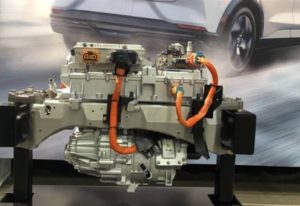
3.5 seconds, for the Performance Edition.
That is quicker than the Mustang GT.
However, this quickness is limited-use only. It is available for 5 seconds bursts, the limit being imposed in all likelihood to prevent overheating the motors or over-taxing the battery pack.
Multiple driver-selectable modes (Whisper, Engage and Unbridled) are available that alter the feel of power delivery and the amount of regenerative braking, which works like engine braking/gearing down in a non-electric car. It also recovers some of the charge you’ve spent getting to 60 in 3.5 seconds; however, to get anything significant back you’ll need to find a long downhill stretch to get it.
Electric high-performance vehicles like the Mach e offer more performance than almost all non-electric performance cars. Like rail guns, they are silent but deadly – to those who challenge their ability to move, quickly.
At any speed, too.
The Mach e doesn’t need to wait for power to be made – then transferred – from an engine that must first rev to make power and then has to send its power through a transmission before the power gets to the wheels. A transmission that must then shift repeatedly to maintain the mechanical leverage needed for optimum acceleration. The Mach e’s motors just rotate – right now. And off you go – compressed back in the seat without any whiplash effect, because the power just keeps on flowing. The sensation is much like that of a powerful jet airplane on its take-off roll, but even more so because the jet’s engines have to spool up before the jet starts its roll.
EV thrust is immediate – and utterly silent, unless you select the Mach e’s Propulsion Sound, which emits a V8-like sound as the vehicle jumps forward.
However, that seemingly infinite thrust begins to fade as speed builds – probably because of the weight.
4,838 pounds – empty – for the GT. This is about 1,000 pounds heavier than this writer’s classic muscle car. It’s a lot of weight to bully through the slipstream but few will notice because few drive fast enough to notice it. From zero to 70-ish, the Mach e is so fast the speedo can barely keep up.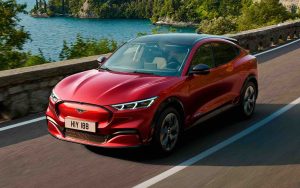
But there is one really important difference between electric performance cars and engine’d performance cars.
Both kinds of performance cars lose range quickly if you use their performance. But electric performance cars lose range (charge) more quickly. Cold – and the use of electric accessories – accelerates that. And because there wasn’t as much range to start with, you’ll be recharging more often if you drive quickly for any distance.
The GT I tested has a putative range of 290 miles. “Putative” in italics because the actual distance an EV travels is – at least in this tester’s experience – about 10-20 percent less than indicated, unless the EV is driven very slowly – in which case, its quickness capability is a kind of futility, like buying a ribeye you dare not eat.
The Mustang GT doesn’t have tremendous range, either – 240 miles in city driving and about 380 on the highway – and that will go down, too, if its performance is used. But the range doesn’t vary as much (e.g., using the heater/heated seats has no effect on an engine’d car’s range and even bitter cold has no meaningful effect on how far the gas in the tank will take you).
Plus you have more range – about 310, averaging the Mustang GT’s its city/highway ranges – to start with.
Driving the Mach e is like driving the Mustang GT around with the tank always less than half full.
But that’s not the fundamental problem.
The problem is the time it takes to restore the range you’ve lost. In the Mustang GT, it’s a simple of matter of stopping at any gas station and filling back up. In about five minutes, you have a full tank. In the Mach e GT, it will take at least half an hour to recover a partial charge – the equivalent of few gallons of gas – at a commercial “fast” charger. A full charge will take considerably longer. At home, it takes overnight to recover a partial charge, using standard (120V) household current.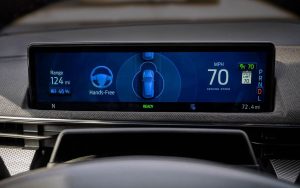
If you pay to have your house wired for 240V “Level 2” charging you can cut the time down to several hours.
Ford includes a charge cord that has a switchable cord end that can be used to “Level 2” and “Level 1” (standard 120V household) charge the Mach e. With some EVs (including the F-150 Lightning I recently reviewed) you must buy a separate charging apparatus to be able to “Level 2” charge at home.
But it’s still a long wait, either way.
That includes the third way, by the way. The “fast” charge way. At least half an hour, remember. Which may be why Ford includes a sketch pad to doodle upon while you wait.
Because I didn’t have the time to drive to the “fast” charger – and wait there – I was obliged to wait for the Mach e to recover charge at home, slowly. For this reason, I was not able to drive it every day, as I always have with every engine’d vehicle I’ve been sent to test drive.
If I owned the Mach e (or any EV, for that matter) I would either need to have another EV as a back-up (much as one will have a spare battery for a power tool on the charger, so that you can keep on working when the battery in the tool runs out of charge) or another vehicle with an engine. This may not be an issue for people whose daily driving is well within the radius of the EV’s actual range and who for that reason rarely find themselves having to stop (and wait) for 30 minutes at a “fast” charger.
Or overnight, at home.
But for people who need to drive more than short distances – and want to be able to just drive, every day – having to worry about range and wait for the recharge can become a drag, quickly.
If the range could be increased to compensate for the time it takes to recharge, this problem would be solved. Or, if recharge times could be reduced to less than 10 minutes – but that seems hugely improbable absent a completely new kind of battery chemistry and an infrastructure capable of supplying the massive amount of electrical power it would take.
The Mach e – in spite of its five doors – is a slightly smaller car than the two-door Mustang, which is 188.9 inches long vs. 186.7 for its electric namesake. And yet, in spite of that fact, the Mach e is a much more spacious car inside, for both passengers and cargo.
The Mustang has back seats, but they are all-but-unusable. Passengers can only get in (and out) if the driver (or front seat passenger) gets out first. And if they can get back there – a near-impossibility for most adults – there is so little room (29 inches) for their legs and heads (34.8 inches) that traveling back there is a kind of punishment. The Mustang also hasn’t got much room for their stuff – or yours, either. Its trunk is 13.5 cubic feet, which is actually pretty large for the type of car the Mustang is – but it’s small compared with the 64.4 cubic feet of total cargo capacity you have available in the Mach e. Even with the back seats up, you still have more than twice as much space (34.4 cubic feet) in the Mach e – plus 38.1 inches of legroom (nine inches more than in the Mustang) and 39.3 inches of headroom (five-plus inches more than in the Mustang).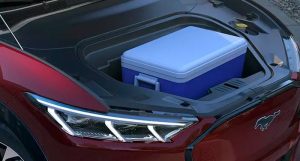
Plus, the “frunk” up front.
This makes the Mach e the “Mustang” for people who need to be able to carry more than one passenger – and more than just a gym bag.
Ford did a lot to make the Mach e look like a Mustang on the outside, too. Or at least, to make you think of one. It looks most like a Mustang when viewed from head-on, or when viewed from the rear. But more work could have been done on the inside – where it looks nothing like a Mustang.
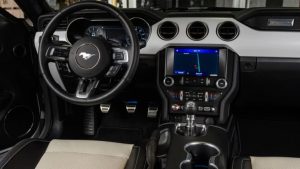
There is a small rectangular LCD display that serves as the main instrument cluster and a Tesla-like very large rectangular tablet display that is the center stack. As in a Tesla, almost every accessory/function is accessed and controlled via the big display. Not that there’s anything wrong with that, as Seinfeld used to say. But it’s nothing distinctive – and certainly nothing Mustang-like. It might have been fun if Ford had given the Mach e a more Mustang-like rather than generic EV interior.
All trims come standard with finger-touch door locks and smartphone accessibility. California Route 1, Premium and GT trims come standard with an enormous, full-length fixed glass roof, heated seats and steering wheel. The Premium also comes standard with an upgraded 10 speaker B&O audio system with 10 speakers.
GT trims get a firmer-riding suspension (adaptive dampers, with the Performance Edition), a 20-inch wheel/tire package, sport buckets and upgraded brakes with contrast-colored calipers.
The Rest
You may have already heard that Mach e prices are up – a lot. Last year’s base Select trim stickered for $44,995 vs. $48,195 this year, an uptick of $3,200. Trims with the extended range battery now cost $6,075-$8,675 more than the same trims (with the same extended range battery) did last year.
Because “materials costs” – read, the materials that go into making the huge batteries in EVs – have become more costly. This is contrary to the assertions made by EV proponents that battery costs would go down as EV production increased. It is also a potential deal-killer for EVs as mass-market vehicles if the prices don’t go down. Even though the Mach e is a bargain compared with a Tesla Y, both are still much too expensive to be mass-market vehicles, leaving aside the range/recharge issues. Even if people like these vehicles, most people cannot afford these vehicles. If prices keep going up rather than down, even fewer will be able to afford these vehicles.
And that will call a halt to “electrification” as a mass-market thing.
The Bottom Line
This isn’t your great grandfather’s electric car. But if the prices don’t come down, a lot – and soon – this electric car might end up going the way of the Baker electric car.
. . .
If you like what you’ve found here please consider supporting EPautos.
We depend on you to keep the wheels turning!
Our donate button is here.
If you prefer not to use PayPal, our mailing address is:
EPautos
721 Hummingbird Lane SE
Copper Hill, VA 24079
PS: Get an EPautos magnet or sticker or coaster in return for a $20 or more one-time donation or a $10 or more monthly recurring donation. (Please be sure to tell us you want a magnet or sticker or coaster – and also, provide an address, so we know where to mail the thing!)
My eBook about car buying (new and used) is also available for your favorite price – free! Click here. If that fails, email me at EPeters952@yahoo.com and I will send you a copy directly!




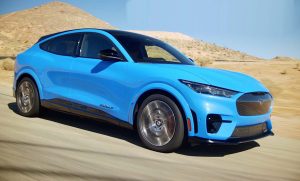

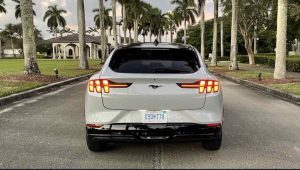








State AGs Sound The Alarm About BlackRock, Vanguard Buying Large Stakes In Utilities
Switching the grid to not green wind turbines and solar panel energy production…
Blackrock and Vanguard buy the utilities….. then they control the voting shares…once they get control, they implement the ESG agenda…. they shut down reliable, cheap, hydro carbon energy production and switch to very expensive, unreliable, high maintenance, intermittent, wind turbines and solar panels….
ESG…if your corporation goes along with the green agenda you get cash, loans and lots of contracts, if you don’t you get get cut off, black listed, pushed out of business.
4.9% of electricity is generated by wind and solar now, don’t expect to have a supply of electricity if you live somewhere that is dependent on hydro carbon burning, electricity production..
Wind and solar energy production require parallel hydro carbon energy burning plants, running 24/7 to fill in gaps when wind and solar produce no energy…..
Or maybe they won’t bother and you will only have electricity sometimes….lol
The elite and the billionaires won’t care, they will have their own power generation systems, yacht’s, multiple homes, private jets, Ferraris, etc..
https://www.zerohedge.com/political/state-ags-sound-alarm-about-blackrock-vanguard-buying-large-stakes-utilities
Switching the grid to not green wind turbines and solar panel energy production…
Blackrock and Vanguard buy the utilities….. then they control the voting shares…once they get control, they implement the ESG agenda…. they shut down reliable, cheap, hydro carbon energy production and switch to very expensive, unreliable, high maintenance, intermittent, wind turbines and solar panels….
guarantying you can’t charge your EV and drive somewhere…the whole point….people are stepping into the trap….the elites sit back laughing….no wonder the EV is only built to last a few years….lol
the reliable, long life, ice vehicles will be force scrapped….
It never ceases to amaze me how much utter BULLSHIT all of these modern cars are festooned with! Smart phone this, and touch-screen that, and electric door openers, and fart or engine sounds, and seats that sodomize you…. This is why I love the simple old cars from the 60’s- They were just simply machines made to drive. YOU did the driving (as opposed to the car doing the driving); you were in complete control; the mechanisms through which the cars were controlled were simple mechanical affairs designed to do what they needed to do in the simplest and most efficient way possible. You could have a few simple creature comforts if you wanted. That is what made those cars very affordable and durable, and a joy to drive, because you could feel the road and experience the environment, as opposed to being isolated from them. You got to handle real metal and linkages that were connected to the engine and the wheels, as opposed to a computer which activates a bunch of cheesy plastic gadgets that creak and moan and break easily.
And you had a simple KEY for the ignition and doors- not some fob or card or ‘smart key’ that costs you $700 to replace….just a simple key that you could have duplicates made of at any hardware store for $1. And what is the advantage to these $700 fobs? Hmmm….seems that thieves can still steal cars just as easily as they ever did (or just carjack ya)- only now even if your car is never stolen, you’ll still be losing a lot of money if you need a duplicate fob or if the ‘security system’ malfunctions.
I shouldn’t read new car reviews……
My first car was a 1963 Volvo PV544, it was almost indestructible, well engineered, handled like a sports car, it was a sucessful race car. It was very simple, easy to work on and had a long lifespan.
It had the B18 1.8 lt. engine….Interestingly, the world’s highest mileage car – a 1966 Volvo P1800S – which managed to cover over 3,000,000 miles (yes, 3 million!) on it’s original engine, was powered by the B18.
Restored ones now sell for around $22,000 to $27,000
https://www.hangar136.com/vehicle/volvo-pv544/
today everything is expensive, defective, computerized, overweight, plastic junk….
Amen, Anon! Those old Vulvas were awesome cars….right about up into the mid 80’s when they ditched the mechanical fuel injection and went electronic (And for some reason, could never seem to make a good automatic tranny after that either…not that I’d want one though.)
I’ve heard of that 3,000,000 mile Volvo- even saw pics of it years ago when it “only” had a million and something miles on it.
I wish I still had that car….most indestructible thing i ever owned…SU carburetors. points and condenser, the previous owner put an isky camshaft in it so it had a lumpy idle….fun car….drove the sh.. out of it ….never broke it…swedish steel…lol…
next most indestructible car I owned was a 1973 Porsche 914 2.0 lt…..drove it hard no problems …
currently have a 1980 924 turbo…seems pretty strong…strong engine and drive train, suspension, feels like a tank….but it is more complicated, stuff like power windows, turbo, so more things to go wrong, it has mechanical cis fuel injection but it has one computer….
It had the B18 1.8 lt. engine….Interestingly, the world’s highest mileage car – a 1966 Volvo P1800S – which managed to cover over 3,000,000 miles (yes, 3 million!) on it’s original engine, was powered by the B18.
we should all drive these instead of EV’s….outlasts 30 EV’s….lol
The illusion of technological progress.
It’s supposed to distract you from the fact that you’re still getting around on four wheels that roll on pavement, and it’s taking longer than it did a few decades ago.
Slightly off topic, but not really:
“It will cut down on the smog and soot from heavy-duty trucks by requiring them to reduce emissions of nitrogen oxides by nearly 50%…”
Nonsense. You don’t cut soot by reducing nitrogen oxides. That’s not how combustion works.
Will they be attacking the “Last Redoubt” (https://www.ericpetersautos.com/2022/09/29/the-last-redoubt-2/)?
https://www.cnn.com/2022/12/20/business/epa-heavy-truck-emissions-rule-climate/index.html
Sorry, I will keep my gas powered vehicle. Granted, it did not (as of yet) get down to the projected, -55 below. It is “only” -30 below right now. These EV’s? TPTB trying to tell us how great they are? It is like them giving us a sh** sandwich, and then insisting it is really roast beef. No thanks.
WHILE ELON MUSK IS BUSY WITH TWITTER DID YOU NOTICE THAT TESLA STOCK IS CRASHING?
https://i.imgur.com/Ccx5uxt.gif
Tesla may well be the canary in the coal mine, and are we ending the era of electric cars and not realize it yet?
For those who are wishing for a V8, 645 HP, six speed manual transmission…here’s your Christmas present.
https://www.foxnews.com/auto/ac-cobra-sports-car-returning
If we want to throw out the EV industry on its ear, we need to show the car manufacturers that autos like the AC Cobra are what we want.
‘It is … wrapped in carbon fiber bodywork.’ — Fox News
This exotic material sends a message that the price might be in the $1 to 2 million range.
Probably it’s a desirable vehicle. But one is saddened that apparently, conventional-bodied V-8 powered sports cars for the mass market are no longer feasible.
Maybe the manufacturer gets a carbon credit for sequestering the stuff in the body panels. All good, all green, offsetting the earth-raping Veeeeeeeeee-8.
Oh, that is depressing. I expected it to be six digits, seven is ridiculous. I guess only the wealthy will be able to ride around in these. The rest of us they want homebound with bicycles and horse drawn carriages.
Hey RG, I think they know – they just don’t care!! There are so many of these companies specialising in remaking originals. Like say Singer 911s, or Revology Mustangs….. a guy’s even trying to do the original defender and someone else specialises in re-making Broncos….
jim h
The new AC Cobra GT Roadster price…
might be in the $1 to 2 million range.
most likely…..under $400,000 ?
AC made the Cobra Superblower in 1998 ……a new Cobra it listed for $180,000
anon1,
I don’t have any inside info. But carbon fiber bodies are costly, such as this $199,000 replica of a 1970 Dodge Charger:
https://www.motorauthority.com/news/1137505_carbon-fiber-1970-dodge-charger-price
Based on the bespoke flavor of the announcement — “AC Cars plans to keep production of the new Cobra GT limited. It intends to work with buyers to outfit the vehicles to their taste” — it sounds like Savile Row-style concierge service for Monsieur, with ‘collectible’ pricing.
So I’ll stick with my seven-figure estimate for now.
Donkervoort makes hand made custom built to your desires, they use tube frame and advanced carbon fibre construction.
The top end model costs….$240,000
I doubt the new AC Cobra GT Roadster is over $400,000
here is Ferrari prices…..Ferraris are fully carbon fibre construction…
2022 Ferrari 812 GTS (Starts at $401,500 )
2022 Ferrari 296 GTB (Starts at $321,400)
2022 Ferrari SF90 Stradale (Starts at $511,295)
2022 Ferrari SF90 Spider (Starts at $570,000)
2022 Ferrari F8 Tributo (Starts at $280,000)
2022 Ferrari F8 Spider (Starts at $302,500)
2022 Ferrari Roma (Starts at $222,620)
2022 Ferrari Portofino M (Starts at $227,000)
Donkervoort’s Insane Hot Rods Are Finally Coming to the US….$240,000
The only production car in the world that will corner at over 2G’s
The quickest car sold in Europe
It is so good there is a 2 year waiting list in Europe for one.
https://www.topspeed.com/cars/car-news/donkervoort-finally-arrives-in-the-us-as-a-240-000-d8-gto-one-off-ar196798.html
AC made the Cobra Superblower in 1998 ……a new Cobra it listed for $180,000 U.S…the new one can’t be millions of dollars…..this AC Cobra GT Roadster…is their newest version of the Cobra…..
the auto journalists said…… production will be limited and a substantial premium over the $180,000 previous Cobra Superblower…
Donkervoort factory…..
https://www.youtube.com/watch?v=ZOnJ0i4ii8w
The new AC Cobra GT Roadster
The cobra used to be a small light car 2270 lb…this new one is 3080 lb and larger…it is now a big heavy car like everything else today….lol…… GT means grand touring…so not a track focused car….so easier to sell….
it will include air conditioning, electric windows, sophisticated in-car entertainment and the option of a removable hardtop….it turned into a luxury car….
AC made the Cobra Superblower in 1998 ……a new Cobra it listed for $180,000 U.S….it weighed 2557 lb…
the new AC Cobra GT Roadster Prices and availability have not been confirmed, but production will be limited and a substantial premium over the $180,000 Superblower…..under $400,000 ?
https://www.supercars.net/blog/ac-cobra-superblower/
The Cobra is the most copied car in history, 160 companies made copies of it, there is still lots of copies of it available today.
The Cobra is a very cool car but I prefer the Super 7 it weighed 1200 lb compared to 2270 for the Cobra.
A modern version of the Super 7…another clone…is the Donkervoort, it is a more track focused car then the new Cobra.
The 2023 Donkervoort F22 only weighs 1654 lb and has 492 hp, the F22 will slingshot from 0 to 60 mph in less than 2.5 seconds, from 0 to 124 mph in 7.5 seconds, hit a top speed of 180 mph, and pull 2.15 g through corners….the only street legal car in the world to pull over 2 G’s through corners.
https://www.motortrend.com/news/2023-donkervoort-f22-first-look-review/
Donkervoort is making light weight fast Sevens because Lotus won’t…
Devotec + Donkervoort D8 GTO + Radical // SPA Tinseau 04.17
At 3:30 watch the Super 7 clone the Donkervoort GTO eat/walk away from the Porsche 911 GT3, the Donkervoort is a very fast seven. It is the quickest car sold in Europe now…..the only street legal car that pull over 2 G’s in corners…
695 kg. 1532 lb…..lightness matters….
Lotus should have kept making/developing the seven and made this car…..
https://www.youtube.com/watch?v=T_J0v69_r_4
all the quickest cars in the world weigh 2000 lb or less an EV will never be under 2000 lb with today’s technology….
The quickest cars in the world usually weigh 2000 lb or less, a modern 3000 lb to 4500 lb supercar/hypercar will never be as fast, you can’t overcome that much extra weight,these batteries weigh from 1000 lb to 1800 lb.
To overcome the weight they add huge hp, this makes the car unstable so they control it with, stabilize it with AI, computers, they drive the car you don’t. These aren’t driver’s cars you are just along for the ride….
In 1961 F1 cars weighed 450 kg 990 lb, in 2022 an F1 car weighs 700 kg. 1540 lb.
The Porsche 919 hybrid EVO 850 kg 1873 lb
The VW IDR EV race car aboiut 907 kg. 2000 lb an EV exception…..
Porsche 917 30 845 kg 1863 lb.
Double A fuel dragster about 1400 lb.
The answer? Buy an ultralight like a Super 7, or a Super 7 clone, around 1200 lb. and totally analog no driver assists…you have to drive it, and more fun then any other car.
Over weight EV’s = no fun….
The Porsche 919 EVO quickest car in the world on the nurburgring..
https://www.youtube.com/results?search_query=919+hybrid+evo+nurburgring
You can buy a used Cobra replica for around $50,000 to $60,000…I would buy one but I think that is too much money…so I bought a Super 7 clone instead, because they are cheaper…the new Super 7, the non replica version is the Caterham (they bought the rights from Lotus), it costs new around $60,000 and up….a new clone Super 7 is around $50,000, a used Super 7 clone might be $20,000 or less….so I bought a used one…….
after I bought it I found out it is better then the Cobra in some ways….number 1…it is half the weight….
‘unless you select the Mach e’s Propulsion Sound, which emits a V8-like sound as the vehicle jumps forward’
This is as silly as the fake meat attempting to taste like meat. If you want to be a vegetarian, be one. Don’t try to mimic the real thing. If you want to drive an EV, drive an EV. Why have the fake sound of a V8?
Meanwhile, in China, Ford is building a new ICE Mondeo (Fusion).
I’m wondering how long it will be before we see those here. Maybe never if Uncle has his way.
After several years of intensive research, I have come up with solutions for the main problems with electric cars and hope those solutions will lead to a Nobel Prize. Or at least a Nobel Prize participation trophy.
LONG TRIPS
Take a plane
By the time you get there with an EV, if you get there,
it will be time to drive home!
Rent an ICE car at the airport when you arrive.
Why waste time on a long drive on interstate highways — they all look the same anyway. You won’t get to see a few cows in farmer’s fields near the highway –but they all look the same too. If you travel with a woman, there will be less time spent in the air with her than in a car, with the usual gossiping about everyone she knows.
CHARGING TIMES
You buy two identical EVs
Drive one EV while the other EV is being fully charged
You could even go to work in one EV
And go out at night with the other EV
This comment is sarcasm,
not meant to be taken seriously
and get EV lovers all riled up.
Yes, I admit it — I am an EV denier!
Having leased many ICE Mustang GTs in my life,
the current much more expensive Mustang EV
does not interest me.
Actually Richard it’s not that much sarcasm, we drive to Florida for a month or two every winter – about 1500 miles, usually takes two very long days or sometimes three if the traffic is particularly sucky. Can’t begin to imagine how long that would take with an EV, especially if chargers are few and far between.
‘this quickness is limited-use only. It is available for 5-second bursts, the limit being imposed in all likelihood to prevent overheating the motors or over-taxing the battery pack.’ — eric
A third possible reason for the 5-second limit is to avoid frying the cables.
After all, the new breed of mighty 500 kW fast chargers (as compared to EVgo’s feeble 50 kW units, which are barely more than wall warts) use water-cooled cables — otherwise they’d melt from the heat.
Faced with a choice between on-board water cooling (costly and weight increasing) or a 5-second limit, apparently engineers opted for the latter. Five seconds of thrust should be more than enough 99 percent of the time, though not for quarter-mile runs at the drag strip.
4,838 lbs for a 186.7-inch car … oy. You’d think it was made of depleted uranium or something. Better stock up on tires and brake pads.
Ev’s have a very complicated cooling system for the battery…the tesla has two water pumps…lol…it also has an oil pump….for the diff and the motors….
the early leaf’s had a small battery and no cooling system…
2021 FORD MUSTANG MACH-E THERMAL SYSTEM IS QUITE COMPLEX: VIDEO
The Mach-E thermal system utilizes 35 hoses in total, along with a rather large bracket to hold everything together, (cooling/heating system to cool/warm the battery)
utilizes 35 hoses…I will stick with an ice car….lol
The Model Y also utilizes one bottle in its ethylene glycol system, while the Mach-E features two. The chiller has its own mounting bracket, two coolant loops, and a total of four pumps and multiple valves to feed all of the many hoses. All in all, it’s a highly complicated system – perhaps unnecessarily so – which increases assembly time and cost, according to Munro.
a total of four water pumps ….worse then an ice vehicle….
https://fordauthority.com/2021/07/2021-ford-mustang-mach-e-thermal-system-is-quite-complex-video/
these lithium fire bomb batteries are so dangerous and unstable, there is a very complex, fragile, cooling/heating system in EV’s to prevent the batteries from catching fire….lol…so when it fails, breaks, they catch fire?….do not buy a used one….lol
my ice cars have one water pump and around four coolant hoses, EV’s have a lot more hoses and multiple pumps….which will be cheaper to maintain?
they don’t bother to tell you this when you buy EV’s….lol
The old air cooled VW’s and Porsches were the best cars…no water pump, rad, coolant, coolant hoses, etc., for cooling they had one large fan….maybe that is why they are worth so much money now…..
the water cooled ice cars got more complicated….
now these EV’s are hyper complicated…..they have a very complicated cooling/heating system for the battery, multiple water pumps,..many coolant hoses (35 in the mustang EV) …… fragile, high maintenance, short life span….
NOTE: you can’t even check the coolant level….lol